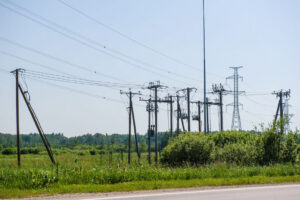Locations affected: southern Europe and the Balkans
What:
Countries in southern Europe and the Balkans are experiencing extreme heatwave conditions. The Balkan countries of Serbia, Croatia, and Bosnia have witnessed temperatures of around 40° Celsius (104° Fahrenheit) for the second week.
Why:
The high temperatures are caused due to a wave of hot air from Africa. Scientists have also attributed the increase in temperatures to climate change.
So What:
- Greece: According to the National Meteorological Service (EMY) in Greece, the heatwave is forecasted to peak on the 18th and 19th of July, mainly affecting central, western, and northern Greece. Certain forms of outdoor work were banned as temperatures reached 40°C in Greece, including manual labour, deliveries, and construction.
- Spain: The Spanish National Meteorological Institute (AEMET) warned of adverse heat conditions on 18th and 19th July. Heat conditions are expected to peak on the Mediterranean coast on the 21st of July.
- Italy: A severe heat warning was issued for thirteen cities in Italy, including Palermo and Sicily.
- North Macedonia: High temperatures have led to outbreaks of multiple wildfires in North Macedonia. The government has declared a state of crisis for a month to combat the wildfires that began at the start of July.
- Albania and Serbia: The government in Albania has rescheduled working hours for civil servants due to the heat. In Serbia, the extreme heat has caused the Rusanda Salt Lake in northern Serbia to dry up, reportedly for the first time.
Outlook:
The heatwave conditions in southern Europe are forecasted to continue this week and are likely to ease towards the end of the week. The rise in temperatures has renewed concerns regarding climate change. It is advised to avoid prolonged exposure to direct sunlight and follow the advisories issued by the authorities. Power disruptions can be expected due to the increase in demand for electricity. Organizations are advised to remain updated on weather warnings and advisories and prepare necessary contingency plans.







